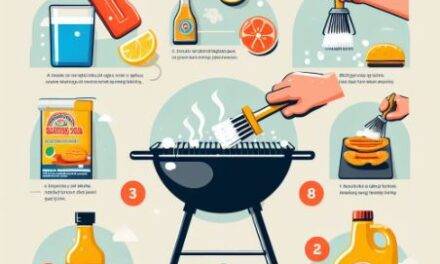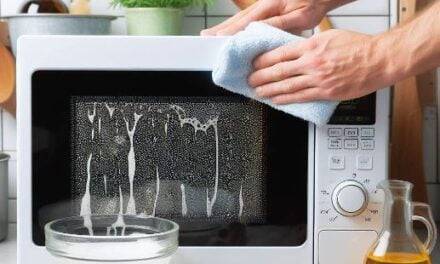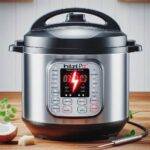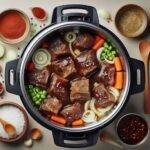Introduction:
Dangerous kitchen tools, In our daily culinary adventures, kitchen utensils play a pivotal role in crafting delicious meals and ensuring a seamless cooking experience. However, the significance of these trusty tools can be undermined when they are poorly made. In this article, we will delve into the far-reaching consequences of using inferior kitchen utensils and underscore the importance of investing in high-quality culinary tools. From health hazards to environmental concerns, we’ll explore why opting for top-notch utensils is a wise decision that can transform your cooking journey.

1) HEALTH HAZARDS:
- Chemical Leaching: Inferior kitchen utensils, particularly those made from cheap plastic, can contain harmful chemicals like BPA (bisphenol-A). When exposed to heat or acidic ingredients, these chemicals may leach into your food, posing potential health risks.
- Food Contamination: Poorly constructed utensils often have hidden crevices and hard-to-clean areas, becoming breeding grounds for bacteria and germs. This can lead to foodborne illnesses and cross-contamination, compromising the safety of your meals.
- Unpleasant Tastes: Some low-quality materials used in utensil production can impart undesirable tastes or odors to your food, significantly affecting the overall flavor of your dishes. The pursuit of culinary excellence demands utensils that enhance, not detract from, the dining experience.
2) REDUCED DURABILITY:
- Frequent Replacement: Inferior utensils are notorious for wearing out quickly, necessitating frequent replacements. This not only strains your budget but also contributes to environmental waste.
- Safety Hazards: Utensils that break or malfunction during use can pose significant safety risks. Imagine hot oil splatters or unexpected cuts while handling poorly made tools – it’s a recipe for disaster.
3) INEFFICIENT COOKING:
- Time-Consuming: Poorly designed utensils often fail to perform essential tasks efficiently, making cooking more time-consuming and frustrating. Quality tools can streamline your culinary efforts, allowing you to enjoy your meals more quickly.
- Uneven Cooking: Flimsy tongs or spatulas may struggle to handle and turn food properly, resulting in unevenly cooked dishes. The precision and reliability of high-quality utensils can make a noticeable difference in your culinary outcomes.
4) HYGIENE CHALLENGES:
- Hard-to-Clean: Low-quality utensils frequently feature inaccessible areas that are difficult to clean thoroughly. This increases the risk of bacterial growth, which can jeopardize the safety of your kitchen and your health.
- Cross-Contamination: Germs and bacteria from poorly cleaned utensils can easily transfer to other kitchen surfaces and ingredients, perpetuating a cycle of potential foodborne illness.
5) UNPLEASANT ODORS:
- Material Issues: Inferior materials, especially plastics, often emit unpleasant odors when exposed to heat. These odors can permeate your food, affecting the overall dining experience. Opting for high-quality materials can eliminate this concern.
6) ENVIRONMENTAL IMPACT:
- The frequent disposal of poorly made utensils contributes to the accumulation of kitchen utensil waste in landfills, exacerbating environmental concerns. Embracing sustainable, durable utensils not only reduces waste but also supports eco-friendly practices in the kitchen.
Common Culprits: Types of Poorly Made Utensils
Let’s dive deeper into some of the common culprits you might find lurking in your kitchen, undermining your culinary endeavors.
1. PLASTIC UTENSILS:
- Flimsiness: The first offender on our list is cheap plastic utensils. These often prove to be flimsy, lacking the sturdiness required for various kitchen tasks. Their inherent weakness makes them prone to warping, bending, or outright breaking in the midst of cooking.
- Chemical Concerns: Another critical issue with plastic utensils is their potential to release harmful chemicals when exposed to heat or acidic foods. Bisphenol-A (BPA) is a notable concern in low-quality plastic utensils, as it can leach into your food, raising health concerns.
2. NON-STICK COOKWARE ACCESSORIES:
- Coating Issues: Non-stick cookware accessories, such as spatulas and spoons, are meant to make cooking and cleaning a breeze. However, those with low-quality non-stick coatings can quickly disappoint. The coating may scratch or wear off easily, contaminating your food and diminishing the longevity of your expensive non-stick cookware.
3. THIN METAL UTENSILS:
- Bending and Rusting: Thin metal utensils, often constructed from subpar materials, are susceptible to bending, rusting, and breakage. These issues not only undermine their durability but also pose safety concerns in the kitchen.
- Non-Stick Damage: Additionally, thin metal utensils can wreak havoc on your non-stick cookware. Their sharp edges and rigid structure can easily scratch and damage the delicate surfaces of your non-stick pans and pots.
4. WOODEN UTENSILS:
- Splintering and Cracking: While wooden utensils can add a touch of rustic charm to your kitchen, low-cost options may splinter or crack easily. They can also absorb odors and flavors from the food they come into contact with, affecting their longevity and hygiene.
5. SILICONE UTENSILS:
- Heat Sensitivity: Silicone utensils are celebrated for their heat resistance and flexibility. However, low-quality silicone utensils may not withstand high temperatures or repeated use. Over time, they can warp, melt, and lose their effectiveness
“Choosing Quality Utensils for a Better Kitchen Experience”
Now that you’re aware of the potential pitfalls associated with poorly made utensils, it’s essential to make informed choices to enhance your kitchen experience.
1. PRIORITIZE MATERIAL QUALITY:
- Stainless Steel: Opt for utensils made from high-quality materials like stainless steel. Stainless steel is renowned for its durability, resistance to corrosion, and safety for cooking.
- Food-Grade Silicone: When selecting silicone utensils, ensure they are made from food-grade silicone. This guarantees safety, heat resistance, and long-lasting performance.
- Hardwood: If you prefer wooden utensils, choose those made from hardwood varieties like bamboo or beech. These woods are known for their durability and resistance to splintering.
2. SAFETY CERTIFICATIONS:
- BPA-Free: When considering plastic utensils, look for safety certifications such as “BPA-free.” This assures you that the utensils are free from harmful chemicals like bisphenol-A.
3. INVEST IN DURABILITY:
- Longevity: Prioritize utensils designed for durability. Investing in high-quality utensils reduces the need for frequent replacements and saves you money in the long run.
- Safety: Durable utensils are less likely to break or malfunction during use, enhancing kitchen safety and preventing accidents.
4. RESEARCH BRANDS AND REVIEWS:
- Quality Assurance: Conduct research on utensil brands and read customer reviews. This will help you gauge the quality, durability, and overall performance of the products you intend to purchase.
5. PROPER MAINTENANCE:
- Care Instructions: Extend the lifespan of your utensils by following proper care and maintenance instructions provided by the manufacturer. Simple practices like hand-washing, avoiding abrasive cleaners, and storing utensils correctly can make a significant difference.
- Storage: Store your utensils in a way that prevents damage and maintains their quality. Consider using utensil organizers or hooks to keep them in good condition.
CONCLUSION:
ELEVATING YOUR CULINARY EXPERIENCE
In your culinary journey, your kitchen should be a sanctuary of creativity and nourishment. The quality of your utensils can significantly influence this experience. By choosing high-quality utensils, you not only enhance the safety, efficiency, and enjoyment of your cooking but also contribute to a sustainable and environmentally conscious kitchen. Let your utensils be your trusted companions, ensuring that every meal you create is a delightful, safe, and satisfying experience. Never underestimate the importance of well-made utensils; they are the unsung heroes of your kitchen.
In the realm of culinary excellence, kitchen utensils are unsung heroes. Choosing poorly made tools can lead to a litany of issues, from health hazards and safety concerns to inefficient cooking and environmental impact. By investing in top-quality utensils, you not only elevate your cooking experience but also champion safety, sustainability, and the overall joy of dining. It’s a recipe for culinary success worth savoring.
Related Article: THE ULTIMATE GUIDE TO MAINTAINING KITCHEN HYGIENE









